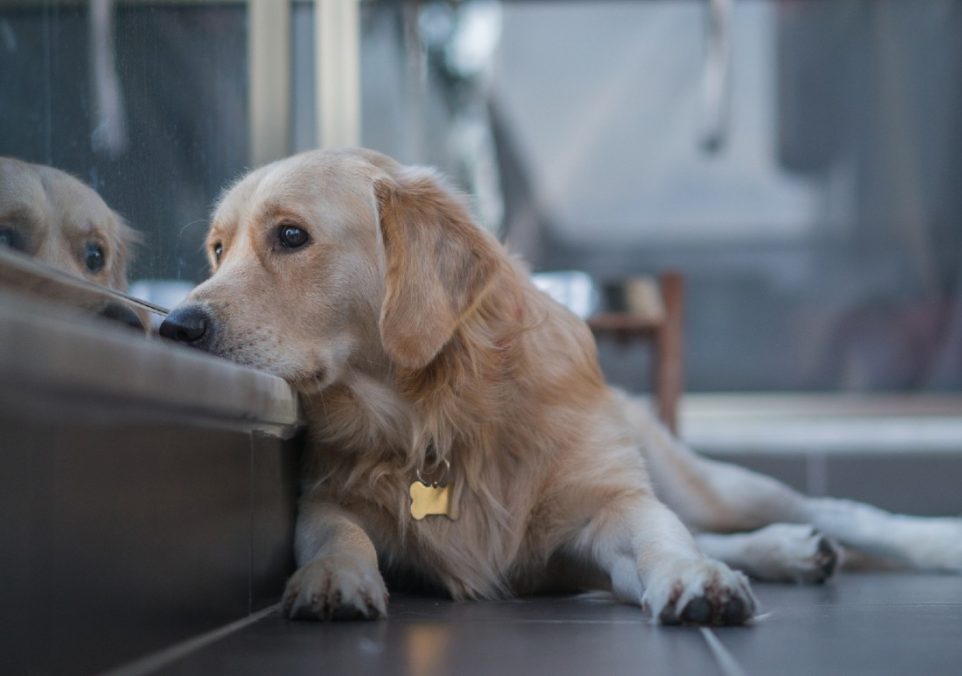3 Signs of Separation Anxiety in Dogs and How to Support Them

As beloved members of our families, dogs form strong bonds with their human companions. While this attachment is heartwarming, it can also lead to a condition known as separation anxiety. Separation anxiety in dogs is a behavioral disorder triggered by the fear of being separated from their owners or left alone. Dogs experiencing separation anxiety may display various distressing behaviors when left alone, and it’s essential for pet owners to recognize and address these signs.
In this blog, we’ll explore three common signs of separation anxiety in dogs so you can easily identify this condition. We’ll also share practical tips on how to support and help your furry friend cope with this condition so they can feel more relaxed and comfortable.
1. Destructive Behavior
One of the hallmark signs of separation anxiety in dogs is destructive behavior. When left alone, dogs with separation anxiety may become anxious and stressed, leading them to engage in destructive coping activities. This behavior often includes chewing furniture, shoes, or household items; scratching doors or walls; and digging at carpets. Such destructive behaviors are not always indicative of a disobedient dog; rather, they can be a product of anxiety and distress.
Supporting Your Dog
Create a safe and comfortable area for your dog when you’re away. Use a crate or confined space with toys and anti-anxiety dog beds to create a sense of security. Interactive toys, such as puzzle feeders or treat-dispensing toys, can keep your dog mentally engaged and distracted while you’re gone. Practice leaving your dog alone for short periods and gradually increase the duration to help them become more accustomed to being alone.
2. Excessive Vocalization
Another common sign of separation anxiety in dogs is excessive vocalization. Dogs may bark, howl, or whine loudly and frequently when left alone to communicate their distress and seek attention. Excessive vocalization can disrupt neighbors and indicate that your dog is experiencing anxiety and emotional discomfort.
Supporting Your Dog
Avoid making a big fuss when leaving or returning home. Maintain a calm demeanor to help your dog associate departures and arrivals with less emotional intensity. Leaving on the radio or TV at a low volume can create background noise and help reduce your dog’s feelings of isolation. You can also monitor your pup and talk to them through a pet camera to put them at ease. If possible, arrange for a pet sitter or enroll your dog in a doggy daycare program to provide companionship and reduce their time spent alone.
3. Bathroom Accidents
Dogs with separation anxiety may also have potty accidents indoors when left alone. The stress and anxiety they experience can lead to a loss of bladder or bowel control, causing them to relieve themselves inside the house, even if they are typically housetrained.
Supporting Your Dog
Stick to a regular feeding and walking schedule to help your dog anticipate bathroom breaks and reduce the likelihood of accidents. Avoid giving your dog large meals or excessive water right before leaving, which can help reduce the necessity or urgency to relieve themselves. Consider using puppy pads or indoor training aids to minimize the mess and make clean-up easier in case of accidents. It may take work and patience, but many dogs are able to overcome these accidents with some time and effort.
Conclusion
Separation anxiety in dogs can be distressing for both pets and their owners. Recognizing the signs of separation anxiety, such as destructive behavior, excessive vocalization, and potty accidents, is the first step toward supporting your furry friend. Remember that patience, understanding, and consistent training are essential in helping your dog cope with this condition. If the anxiety is severe or persists despite your efforts, consider seeking guidance from a veterinarian, professional dog trainer, or animal behaviorist. With the right support and care, you can help your dog feel more secure and content when left alone, strengthening the bond between you and your beloved canine companion.
Your Pet’s Best Interest, Always
At Pet Institute, we take pet care seriously. We're dedicated to transparency, impartiality, and the well-being of your pets in every article, review, and recommendation we provide. Our unwavering commitment to these principles ensures that you, our valued reader, always receive reliable and unbiased information. Let us be your trusted guide in the world of pet care and companionship.